Fruits of Bangladesh: Bangladesh enjoys generally a sub-tropical monsoon climate. There are three distinct seasons in Bangladesh. Winter from November to February a cool temperature (12 – 28 °C)  and little or no precipitation prevails. Summer continues from March to May with a little rainfall with temperatures as high as 40°C. The monsoon prevails from June to October having high rainfall, humidity and temperatures from 25 – 35 °C. The average precipitation per year varies among the regions from 1194-3454 mm.
and little or no precipitation prevails. Summer continues from March to May with a little rainfall with temperatures as high as 40°C. The monsoon prevails from June to October having high rainfall, humidity and temperatures from 25 – 35 °C. The average precipitation per year varies among the regions from 1194-3454 mm.
A tropical location, lush greenery, moisture-rich loamy soil and production-friendly climate-all these make Bangladesh one of the notable growers of a vast range of fruits.
Fruits of Bangladesh
More than 60 varieties of fruits are being grown in Bangladesh. Major fruits include mango, banana, papaya, jackfruit, pineapple, guava, litchi, Pomelo, lemon etc. Banana constitutes over 40% of the total fruit production in Bangladesh.
Most of these fruits perishable in nature with high nutritional value – are available during the respective season of production.
Summer Fruits in Bangladesh
Among summer fruits are mango, jackfruit, litchi, banana, pineapple, watermelon, guava, lemon, star fruit, honeydew etc. are available between May and July. Quality and varieties of Mangoes produce in Rajshahi and Dinajpur.

So, it is no surprise that summer in Bangladesh is called season of fruits specially for mango, jackfruit, lichi and jam (blackberry)the popular crowd favourites. In taste, flavour and texture, scores of most these fruits in Bangladesh are higher than similar fruits in other countries. One needs not to be an expert to feel this difference. Visitors to Bangladesh may just taste any of the fruits and judge for themselves.
Winter Fruits in Bangladesh
Winter fruits are Oranges, Hog-plums ( Amra ), Pomelo ( Jambura ), etc. Orange grows in Sylhet and Chittagon. Plums grows in Barisal mainly and Noakhali, Laxmipur, Norsindi, Gazipur also.
Winter in Bangladesh brings a rich variety of seasonal fruits that are both delicious and nutritious. The cool and dry weather during the winter months, typically from November to February, is ideal for cultivating a range of fruits that thrive in this climate.
One of the most popular winter fruits in Bangladesh is the orange. Grown primarily in the northeastern region, Bangladeshi oranges are known for their sweet and tangy flavor, making them a favorite among locals. Another widely enjoyed fruit is the pomegranate, valued for its juicy seeds and numerous health benefits. Guava, often referred to as the “apple of the tropics,” is also abundant during the winter season. It is packed with vitamin C and is enjoyed both fresh and in various local dishes.
Dates, although not native to Bangladesh, are widely consumed during winter, especially around religious festivities. These fruits are imported and are cherished for their sweetness and energy-boosting properties. Additionally, winter is the season for custard apples, or “Ata,” which have a creamy texture and are rich in nutrients.
These winter fruits not only add variety to the diet but also play a vital role in providing essential vitamins and minerals, contributing to the overall health and well-being of the people of Bangladesh.
Rainy season fruits in Bangladesh
The rainy season in Bangladesh, spanning from June to September, brings with it a bountiful harvest of seasonal fruits that are cherished for their freshness and flavor. The warm and humid conditions of the monsoon are ideal for cultivating a variety of tropical rainy season fruits in Bangladesh that thrive during this time.
One of the most prominent fruits of the rainy season is the jackfruit, which is also the national fruit of Bangladesh. Known for its large size and unique, sweet flavor, jackfruit is enjoyed both in its ripe form and as a vegetable when unripe. Another popular fruit is the lychee, particularly from the northern districts like Dinajpur. Lychees are small, juicy, and sweet, making them a favorite snack during the monsoon.
Mangoes, often referred to as the “king of fruits,” also peak during the rainy season. Varieties like Himsagar, Langra, and Fazli are particularly sought after for their rich, sweet taste. Pineapples are another monsoon delight, especially from the hill tracts of Chittagong, where they are known for their tangy-sweet flavor.
These rainy season fruits not only add a burst of flavor to the diet but also provide essential nutrients, helping to boost immunity and overall health during the wet and humid months in Bangladesh.

Seasonal fruits in Bangladesh
Lime, Banana, papaya are all season fruits available throughout the year every where of Bangladesh.
Bangladesh enjoys a diverse array of seasonal fruits throughout the year, each bringing its unique flavors and nutritional benefits to the table. The country’s tropical climate, with distinct seasonal changes, supports the growth of a wide range of fruits that are enjoyed by people across the nation.
In the summer, mangoes reign supreme as the “king of fruits,” with varieties like Himsagar, Langra, and Amrapali offering sweet, juicy delights. Jackfruit, the national fruit of Bangladesh, also thrives during this season, known for its large size and distinctive taste. Pineapples and lychees are other summer favorites, bursting with tangy and sweet flavors.
The monsoon season, from June to September, sees an abundance of fruits like guavas, pineapples, and the prized jamun (black plum), which are particularly refreshing during the humid months.
As winter approaches, the fruit landscape shifts to include oranges, pomegranates, and custard apples. These fruits, rich in vitamins and antioxidants, help keep the immune system strong during the colder months.
Throughout the year, seasonal fruits in Bangladesh not only provide essential nutrients but also play a significant role in the country’s cultural and culinary traditions, reflecting the rich agricultural heritage of the region.
Annual fruits Production in Bangladesh
There are very few industries for processing of fruits in Bangladesh . The annual requirement of fruits in the country is over 60, 00,000 metric tons. But current production is only around 15, 00,000 metric tons, leaving the country highly deficient in fruits production.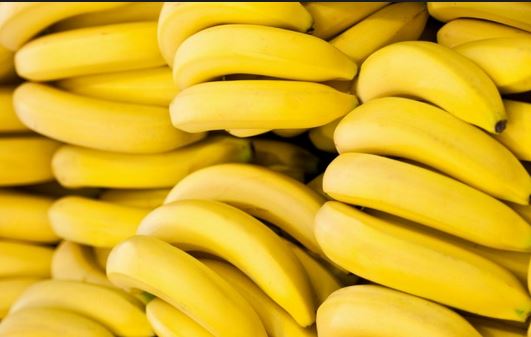
According to statistics complied few years ago production of varieties of fruits in Bangladesh is as follows:
Banana- around 6,40,000 metric ton. Mango-around 1,90,000 metric tons. Pineapple- around 1, 50,000 metric tons. Jackfruit- around 2,70,000 metric tons. Papaya- around 50,000 metric tons. Melon- around 1,10,000 metric tons. Litchi- around 13,000 metric tons. Guava- around 50,000 metric tons. Ber- around 16,000 metric tons. Orange- around1,000 metric tons. Pomelo- around 15,000 metric tons. Lime & Lemon- around 13,000 metric tons. Other fruit- around 22,000 metric tons.
Bangladesh is endowed with favourable soil and climate for cultivation of many horticultural crops yet total production far less than enough. One of the reasons for low production, despite vary favorable climatic condition, is the absence of commercial cultivation of fruits. In the rural areas of the country, the farmers in addition to other food and commercial crops are also the growers of fruits.

In addition to better taste, flavour and texture, the fruits of Bangladesh have another attractive plus point most of these are organic. Amid growing concern about use of chemical fertilizers in growing food crops, fruits and vegetables and its possible bad effect on the consumer, Bangladesh fruits can certainly claim to be all natural.
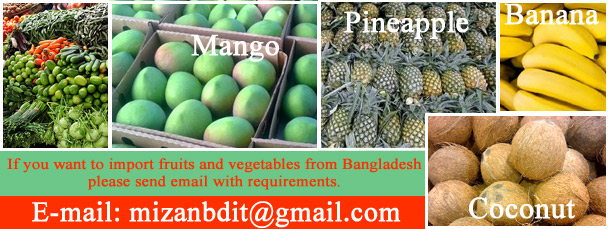
List of notable fruits, their local and English names and growing seasons are as follows:
Here the list of fruits in Bangladesh. In Bangladesh, varieties of fruits come in the different season.
The list of fruits in Bangladesh
Export Quality fruits of Bangladesh
1. Aam ( Mango ) – May-September.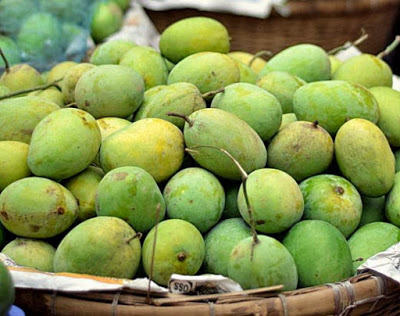
2. Kathal (Jackfruits) – April – October.
3. Lichu (Lychee/Litchee) – June – July.
4. Jam ( Berry ) – May – June.
5. Kala ( Banana – All season.
6. Boroi ( Berr / Jujubi )- November-February.
7. Ata ( Cherimoya ) – March-May.
8. Gab ( Sharonfruit ) -April-June.
9. Amra ( Golden Apple ) – April-October.
10. Jambura /Batabilebu (Shaddoc / Pummelo ) – April-October.
11. Jamrul (Rose Apple) April – October.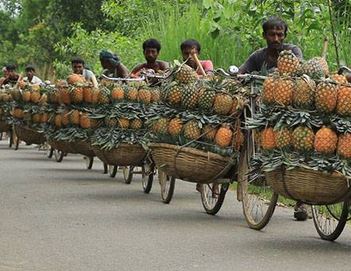
12. Kaggji Lebu ( Lime )- All seasons.
13. Kamranga ( Carambola / Star fruit )- April-October.
14. Lebu ( Lemon )- April-October.
15. Safeda ( Sapodila / Sapota/Chico )- April – October.
16. Kul / Boroj (Plum / Jujubi )- November-February.
17. Latka ( Longan )- April-October.
18. Amloki ( Embica )- July-October.
19. Pani phal ( Water chestnut ) – April-October.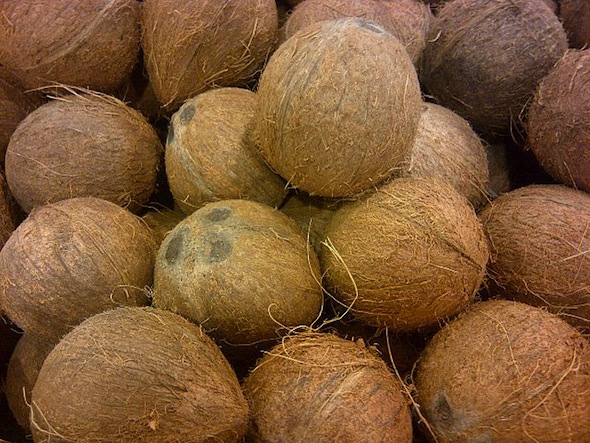
20. Peara ( Gauva ) – All season.
21. Jalpai ( Olive )- November-February.
22. Sharifa ( Atemoya) – August-December.
23. Tal ( Mangoesteen / Plam)- April-October.
24. Bel (Wood Apple).
25. Kad Bel.
26. Bangi fruits – April – May
27. Water Melon – April – May





